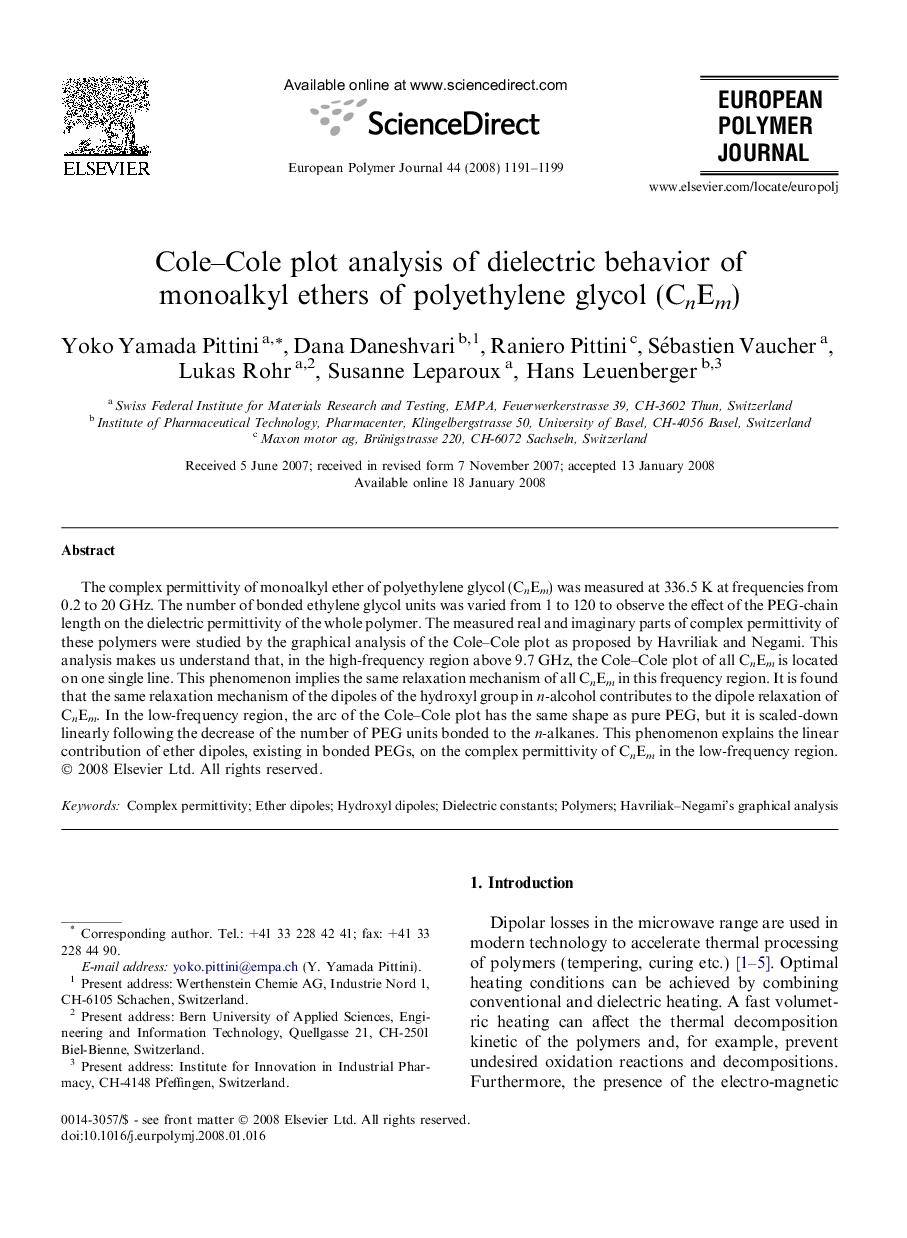| Article ID | Journal | Published Year | Pages | File Type |
|---|---|---|---|---|
| 1396571 | European Polymer Journal | 2008 | 9 Pages |
The complex permittivity of monoalkyl ether of polyethylene glycol (CnEm) was measured at 336.5 K at frequencies from 0.2 to 20 GHz. The number of bonded ethylene glycol units was varied from 1 to 120 to observe the effect of the PEG-chain length on the dielectric permittivity of the whole polymer. The measured real and imaginary parts of complex permittivity of these polymers were studied by the graphical analysis of the Cole–Cole plot as proposed by Havriliak and Negami. This analysis makes us understand that, in the high-frequency region above 9.7 GHz, the Cole–Cole plot of all CnEm is located on one single line. This phenomenon implies the same relaxation mechanism of all CnEm in this frequency region. It is found that the same relaxation mechanism of the dipoles of the hydroxyl group in n-alcohol contributes to the dipole relaxation of CnEm. In the low-frequency region, the arc of the Cole–Cole plot has the same shape as pure PEG, but it is scaled-down linearly following the decrease of the number of PEG units bonded to the n-alkanes. This phenomenon explains the linear contribution of ether dipoles, existing in bonded PEGs, on the complex permittivity of CnEm in the low-frequency region.
